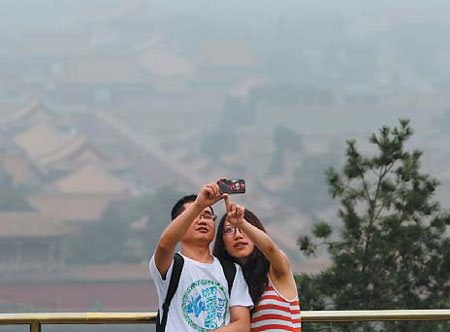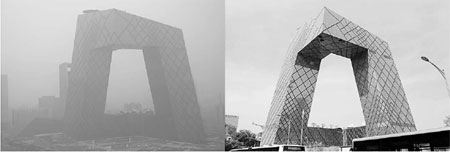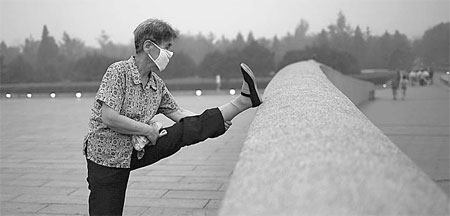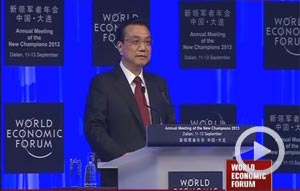Nation gets tough on air pollution
Updated: 2013-09-13 07:14
By Wu Wencong (China Daily)
|
||||||||
Updated action plan drawn up in response to severe smog at start of the year, Wu Wencong reports
The toughest-ever measures to tackle China's worsening air pollution have been announced by the government.
The Airborne Pollution Prevention and Control Action Plan (2013-17) unveiled on Thursday sets out goals for the nation's 338 cities.
The plan aims for a marked improvement in air quality over the next five years, said Wang Jian, deputy head of the Pollution Prevention and Control Department at the Environmental Protection Ministry.
The concentration levels of breathable suspended particles with a diameter of 10 microns - known as PM10 - or less, must fall by at least 10 percent by 2017 from the levels in 2012.
Tougher objectives have been set for some key areas.

For the Beijing-Tianjin-Hebei regional cluster, concentration levels of PM2.5 particles - those smaller than 2.5 microns in diameter, which can penetrate deep into the lungs - must be cut by 25 percent by 2017 from the 2012 level, under the plan.
The target for the Yangtze River Delta region is a reduction of 20 percent and for the Pearl River Delta region it is a cut of about 15 percent.
The plan takes into account pollution and economic development in different areas, with the aim of reducing PM2.5 levels in the three key regions and PM10 levels in the other cities, Wang said.
"But this does not mean that controlling PM2.5 is not important in the other regions, as PM2.5 particles account for 50 to 60 percent of PM10 particles," he added.
The plan is an updated version of one released late last year that was designed to tackle air pollution in 13 key areas.
Under the former plan, PM2.5 levels in the three key areas were targeted to drop by 6 percent by 2015, based on 2010 levels.
Wang said the updated version was drawn up in response to a growing consensus that a tougher approach to air pollution is required following severe pollution in January.
Thick smog and haze covered 2.7 million square kilometers of the country at the start of the year, affecting more than 600 million people.
Shijiazhuang, the capital of Hebei province, saw a record-high hourly concentration level of PM2.5 of more than 1,000 micrograms per cubic meter.
In Beijing, air quality failed the health standard for most of the month.
"The new action plan will bring real improvements to our air quality. Residents will feel the change," pledged Wang.
The action plan, the formulation of which started in December and involved six government departments, contains 35 detailed measures, including bringing pollutants, such as volatile organic compounds, under control. Other measures include achieving negative coal consumption in several regions, accelerating the process of monitoring and disclosing PM2.5 readings, extending monitoring from 119 county-level cities to all 338 before 2015, and banning heavily polluting motor vehicles from the streets by 2017.
Economic concerns
Some experts expressed concerns that the measures may hamper economic growth. Wang admitted that the plan may have an adverse effect on some industries, but said it will favor many others.
"For instance, steel production capacity will be largely reduced and the industry will be able to develop in a much healthier mode," he said. "An estimated 1.7 trillion yuan ($277 billion) of investment from all channels will back up the environmental protection industry. We are sure that their combined influence on the economy will be positive."
Some experts expressed the view that a certain amount of economic fallout is natural and reasonable.
"Improving the environment is basically a form of construction, and one that definitely requires investment from society," said Zhou Dadi, vice-chairman of the China Energy Research Society.
"We have sacrificed the environment to the previous economic growth figures and the financial cost is certain to rise if we include all these factors," he said.
Another concern troubling experts and officials is the authenticity and integrity of the data involved in the plan, because they are "the basis to ensure the action plan can really make a difference to the environment", as Wang put it.
He said national-level monitoring sites run directly by the National Environmental Monitoring Center will be set up in every county-level city. There will be three sites in each municipality, two in each provincial capital and one in each of the other cities.
The construction and management of the monitoring sites is still under discussion, said Li Guogang, deputy head of the China National Environmental Monitoring Center, who stressed that the technology will not be a problem.
Li said that in addition to 74 cities that began releasing PM2.5 readings in January, a further 116 are preparing for the construction of PM2.5 monitoring sites, which will be fully operational by the end of the year.
Zhou, from the China Energy Research Society, said the accuracy of the official readings could be ascertained by comparing them with readings conducted by independent research institutes. He pointed out that it's hard to fool the public during periods of heavy pollution, a fact that should prevent the compilation and release of skewed data.
Assessment
The action plan is deemed the toughest ever, not just because of the stringent targets it sets, but also because of its performance assessment system, which will see the Organization Department of the Communist Party of China becoming involved with an environmental action plan for the first time.
The department has the power to appoint or dismiss officials, and if local governments fail to reach their allocated targets, the positions and political futures of the officials involved may be affected, according to Wang.
However, he said the action that will be taken against officials who fail to meet the targets has yet to be formulated: "A detailed assessment method will be released to the public later, with clear indications of the repercussions for local officials if they don't achieve the targets or fail to respond to heavy pollution."
Experts called the plan a working guide for the government over the next five years. Although improvements will undoubtedly result, the public should not count on the plan to provide a total solution to the problem of pollution.
"Western countries have spent decades trying to improve their air quality, and are still trying. What China is doing here is trying its best to make improvements happen as soon as possible, but we also need to be realistic about the hardships ahead and prepare for a protracted war against pollution. It's a war that will involve every single member of the public," said Chai Fahe, vice-president of the Chinese Research Academy of Environmental Sciences.
Contact the writer at wuwencong@chinadaily.com.cn
Jiang Xueqing and Yang Wanli contributed to this story.

|
A couple in Beijing's Jingshan Park take photos against the background of a smog-shrouded Forbidden City as bad air pollution hit the capital on June 30. Zhuo Ensen / for China Daily |
|
China Central Television new building shrouded by smog and in clean air. Beijing has been hit hard by severe pollution since the start of the year. Li Gen / for China Daily |
|
A Beijing resident defies the heavily polluted air to take her morning exercise. Xinhua |
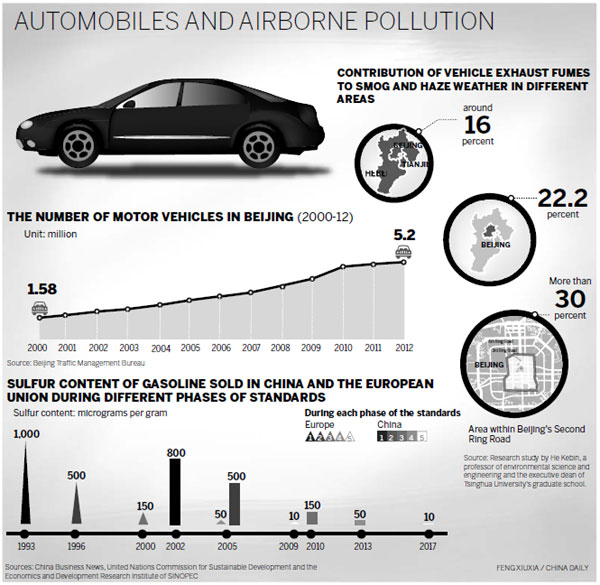
(China Daily USA 09/13/2013 page1)
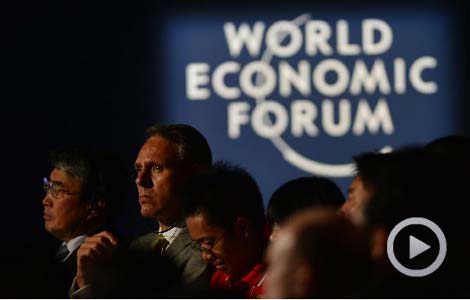
 Experts discuss Chinese premier's economic plan
Experts discuss Chinese premier's economic plan
 Voyager 1 has left solar system: NASA
Voyager 1 has left solar system: NASA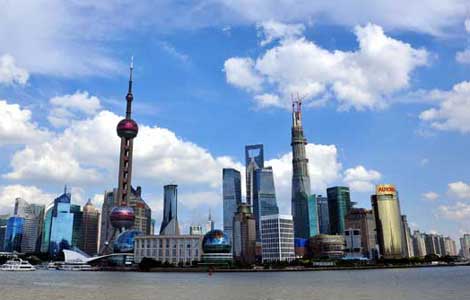
 Time of opportunities, challenges
Time of opportunities, challenges
 Plenty of fizz
Plenty of fizz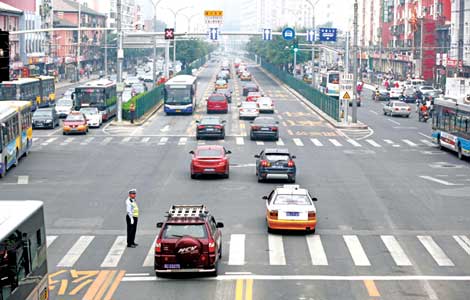
 Traffic about-face seeks to ease congestion
Traffic about-face seeks to ease congestion
 Another iPhone4 explodes while charging
Another iPhone4 explodes while charging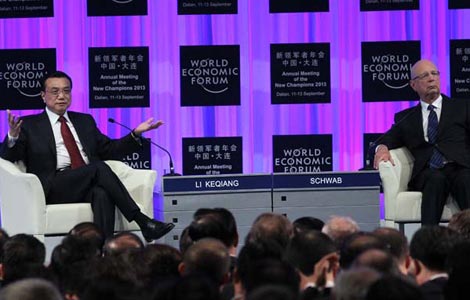
 Premier stresses transformation of the economy
Premier stresses transformation of the economy
 Soyuz capsule returns from space station
Soyuz capsule returns from space station
Most Viewed
Editor's Picks
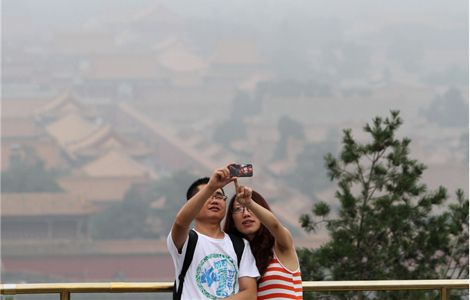
|

|

|

|

|

|
Today's Top News
WB head to discuss climate in China visit
US moves against China firms criticized
3 sentenced to death for Xinjiang terror attack
Xi welcomes talks on Iran
Assad agrees to hand over chemical weapons
Time of opportunities, challenges
China sets caps for rare earths exploration
Ending non-tariff barriers benefits global economy
US Weekly

|

|
